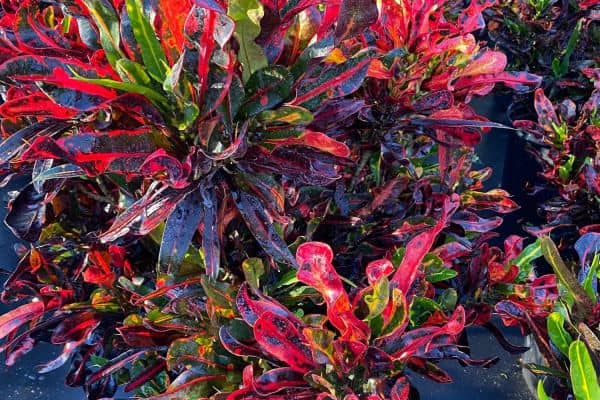Mammy Croton is an easy-to-grow and low-maintenance plant that originated from Australia, Indonesia, and Malaysia. They have colorful leaves which may twist and curl as they grow and expand.
So in this section, we will learn how to care for and grow the Mammy Croton plant and its complete guide:
Mammy Croton Plant Care and Growth Guide
Mammy Croton is an easy-to-grow and low-maintenance plant that requires minimal care and requirement for them to grow properly. Here are some of the ways you can care for and grow your Mammy Croton plant.
1. Light
As for light Mammy Croton Plant need four to six hours of full sun for them to grow well. But if you live in extremely warm climate areas during the heat of the day you should provide them, cover or make sure it has a little shade. If you have planted the Mammy Croton Plant indoors you can keep them in a window place to receive a few hours of sunlight.
2. Soil
As for soil Mammy Croton Plant does best in well-draining soil. You can mix the soil with organic matter such as coco coir, perlite, or vermiculite to help them with drainage and help them to grow properly. You can also add a handful of perlite to regular store-bought potting soil.
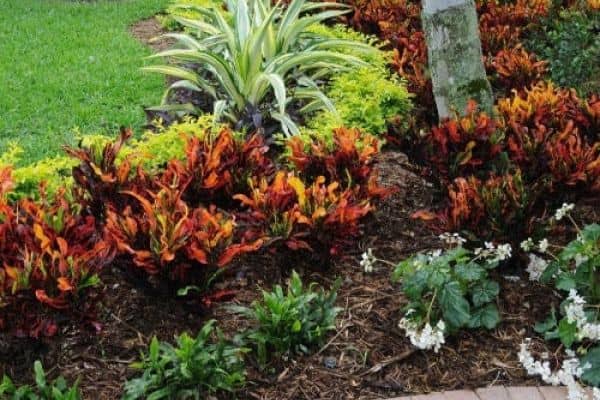
3. Water
As for water Mammy Croton Plants don’t require much water they aren’t super thirsty plants. You can water them once the soil starts to dry out around the plant and remember that the water should flow out of the drainage holes.
Remember that if you water Mammy Croton Plants too much their leaves will wilt. During the dry season, they need more water as they thrive in humidity and are known for being tropical plants.
4. Temperature and Humidity
As for temperature Mammy Croton Plant prefers temperatures of 60 degrees Fahrenheit to 70 degrees Fahrenheit. The extreme temperature limit for the plant is 55 degrees Fahrenheit and 80 degrees Fahrenheit. Below 55 degrees Fahrenheit will damage your plant leaves and above 80 degrees Fahrenheit will make your plant weak and not grow strong.
As for humidity Mammy Croton Plant will enjoy the occasional misting as they are known for being a tropical plant.
5. Fertilizer
As for fertilizer Mammy Croton Plant doesn’t need to be much fertilized. You can try half-strength fertilizer to maintain and grow them properly. Just remember to use fertilizer once a month from the beginning of spring, at the beginning of summer, or later in the summer. As for the quantity of fertilizer, you can check the fertilizer’s instructions and use it accordingly.’
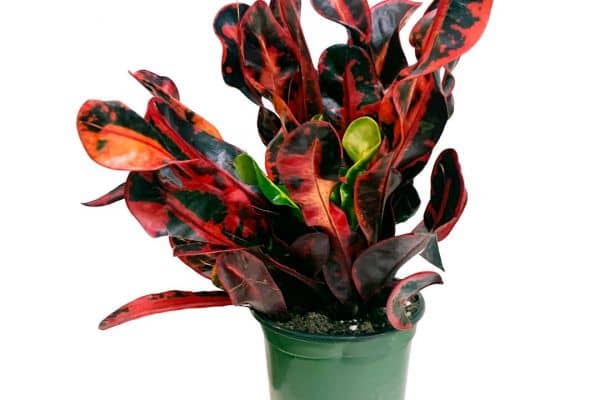
Mammy Croton Pests
Some of the insects can settle on Mammy Croton such as Nematodes, spider mites, mealybugs, and scale. But all of them mostly Mammy Croton plants suffer from spider mites and there is no exact reason why this happens and why this flower is so attractive to this pest.
Spider mites mostly occur for different reasons like irregular watering, insufficiently high air humidity, as well as unsystematic wiping of leaf blades. So to get rid of insects like mealybugs, spider mites, or scale you can use the tobacco solution to which soap is added. You can use the tobacco solution to wipe the above-ground parts of the bush and after 60 to 90 min you can carefully wash the off the plants. Remember to not get the tobacco solution and add soap mixture to the soil.
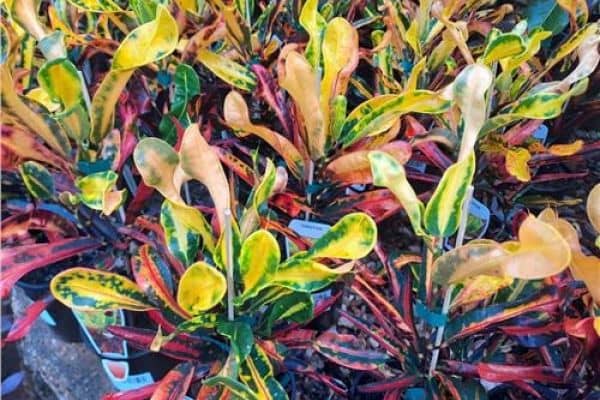
Mammy Croton Diseases
There are some of the diseases Mammy Croton can get and here are some of the lists and solutions to get rid of them:
Leaves Falling
One of the common problems in Mammy Croton is that there leaves fall which indicates that they cannot absorb moisture. This problem occurs when the root system is in the cold you can prevent it by moving them to a well-lit and warm place and water then when the soil is driven for several centimeters deep. Remember when leaves fall you should also stop using fertilizer for a while.
Drying Bush
Drying bush is another problem that may occur in the Mammy Croton plant remember if the lower leaf plates of a flower dry out that’s a natural process. When Mammy Croton can’t get enough humidity as its requirement then the tip of the Mammy Croton leaves dry out.
But if the Mammy Croton plant leaves have brown spots form on the foliage and drying of its edges it means the plant is cold and the bush is freezing
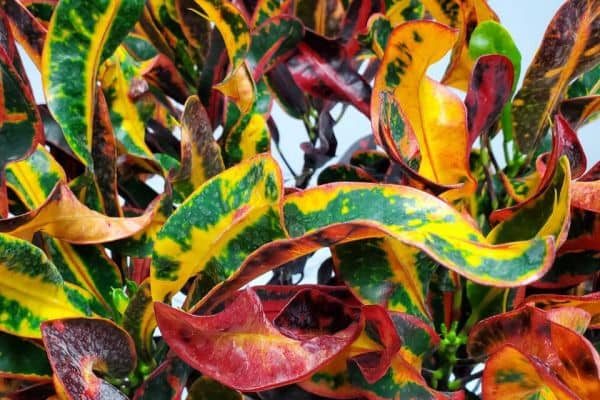
Mammy Croton Plant Quick Guide
- Growing Zones: 11-12 (Outdoors)
- Origin: Australia, Indonesia, Malaysia
- Height: 2-3 feet
- Light: Low to bright light
- Water: Water when the top 1-2 inches is dry
- Soil: Well draining soil
- Fertilization: Once a month spring through fall with half-strength fertilizer
- Humidity: High, 40% – 80%
- Temperature: 60ºF – 70ºF
- Does it Bloom: Yes it blooms
- Propagation: Cuttings
FAQs
Q. Why is my Mammy Croton dropping leaves?
Mammy Croton leaves drop when they get inconsistent soil moisture to solve this problem you shouldn’t let the soil dry out completely.
Q. Is Mammy Croton toxic to dogs and cats?
Yes, Mammy Croton is toxic to dogs, cats, animals, and humans if the plant is ingested.
Q. Do Crotons like sun or shade?
If you are growing crotons indoors they need bright, indirect light. But if you are growing crotons outdoors they thrive in partial shade and cool climates, they can tolerate full sun if kept moist.
Also Read: How to Grow and Care for Rodgersia? A Complete Guide for Beginners!
